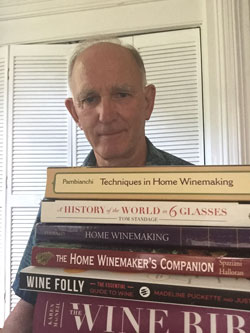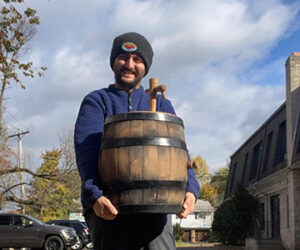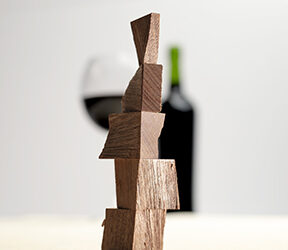 It is a great time to be a home winemaker. I wasn’t born into a winemaking tradition, but I’ve learned the craft in several different ways and I keep learning about it every day. I think it goes without saying . . . things weren’t always this good. Unreliable kits, unreliable grapes, unreliable information; let’s face it, winemakers have never had it this good.
It is a great time to be a home winemaker. I wasn’t born into a winemaking tradition, but I’ve learned the craft in several different ways and I keep learning about it every day. I think it goes without saying . . . things weren’t always this good. Unreliable kits, unreliable grapes, unreliable information; let’s face it, winemakers have never had it this good.
For those who use wine kits, life is simple: Everything is balanced, measured out, and the instructions are clear! I’ve won gold medals with kits, but had some fails too. As the saying goes: Give 10 cooks the same recipe and you can get 10 different results.
Gene Spaziani’s book, The Home Winemaker’s Companion, will give you general recipes for each variety and can take a lot of the fear out of the first few batches made with grapes or juice. You can apply standard measures to distinct types of wine to get a suitable result. In my tall pile of books on amateur winemaking, Techniques in Home Winemaking by Daniel Pambianchi is always near the top. If your winemaker learning curve reaches the point where you are comfortable with measurements like pH and specific gravity and you’re greedy to get more technical information, this is your book.
Obviously, WineMaker magazine is an invaluable resource and you can access its content on their website with a broad range of topics, from detailed steps for specific varieties, techniques, and lots of practical information on the hobby. Facebook has several groups organized around home winemaking that discuss tips and techniques in amateur winemaking. There are forums on winepress.us where hobbyists share advice and go well beyond traditional winegrape varieties to discuss other fruit and vegetable wines and mysterious fluids called “Dragon’s Blood” and “Skeeter Pee.” One can ask questions without embarrassment.
The list of available vendors and the inventory that is available to hobbyists is extremely impressive. My distributor, Musto Wine Grape located in Hartford, Connecticut offers weekend workshops, classes, and has at least two talented winemakers on their staff. And I can call them any day for advice. Example; when some Southern Hemisphere grapes presented too much “green” flavor, I called and they recommended a specific tannin that helped round out the edges back into the wine. The websites for E.C. Kraus and MoreWine! are flush with informative articles and resources as well.
More and more colleges offer online and distance learning courses, making it possible to get instruction from anywhere in the country, or the world. College agriculture programs offer daylong or distance-learning classes like the ones I attended when I first got started. I took my classes through the Cornell Experimental Station in Geneva, New York. (I did ask if I could say I was a Cornell alumnus. I received a curt: No.) UC-Davis Extension has a multi-course winemaking certificate program, while many programs such as Penn State offer online course for the home winemaker. VESTA (The Viticulture Enology Science and Technology Alliance), located at Missouri State University, partners with local businesses to supplement its online education programs.
The famed mathematician, physicist, astronomer, and philosopher Galileo Galilei famously stated, “Wine is sunlight held together by water.” Well thanks to all these amazing resources now available to us home winemakers, we don’t need to live in Tuscany, Italy to make amazing wines . . . although it probably wouldn’t hurt.






